NCERT Solutions for Class 6 Maths - Symmetry
Exercise 13.1 Page No. 263
Q1: List any four symmetrical objects from your home or school.
Ans: The four symmetrical objects are the blackboard, tabletop, pair of scissors, and computer disc.
Q2: For the given figure, which one is the mirror line, l1 or l2?
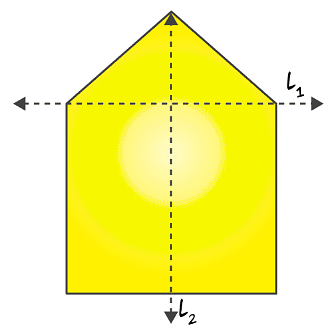
Ans: l2 is the mirror line of the figure. When the given figure is folded about the line l2, the left part exactly covers the right part and vice versa.
Q3: Identify the shapes given below. Check whether they are symmetric or not. Draw the line of symmetry as well.

Ans:
(a) Yes, it is symmetric
(b) Yes, it is symmetric
(c) No, it is not symmetric
(d) Yes, it is symmetric
(e) Yes, it is symmetric
(f) Yes, it is symmetric
The figures given below are the line of symmetry:
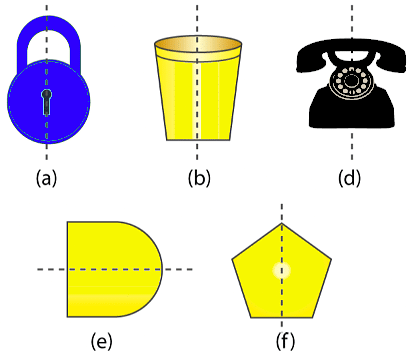
Q4: Copy the following on a square paper (The square paper is what you would have used in your arithmetic notebook in earlier classes). Then, complete them such that the dotted line is the line of symmetry.
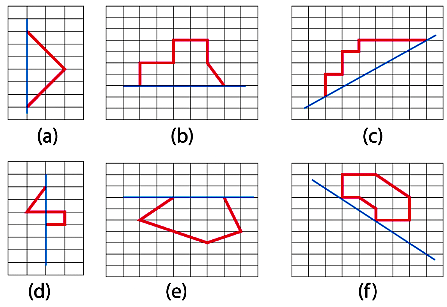
Ans: To make the dotted line as a line of symmetry, the given figure may be drawn as follows:
(a)
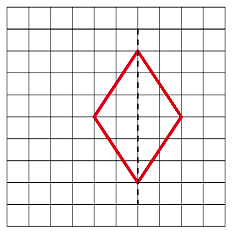
(b)
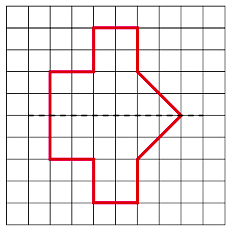
(c)
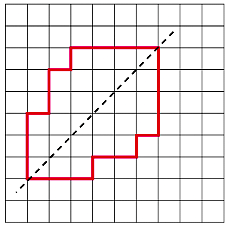
(d)

(e)
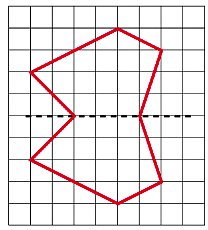
(f)
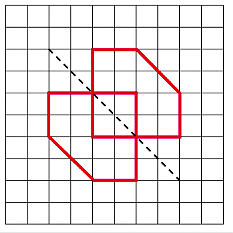
Q5: In the figure, l is the line of symmetry. Complete the diagram to make it symmetric.

Ans: The below figure is the exact diagram to make it symmetric:
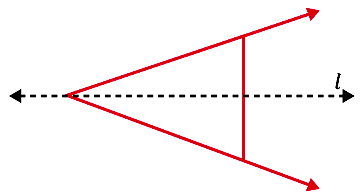
Q6: In the figure, l is the line of symmetry. Draw the image of the triangle and complete the diagram so that it becomes symmetric.
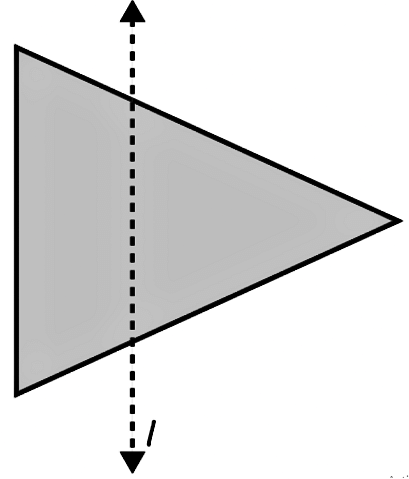
Ans:
The required triangle can be drawn as follows to make it symmetric:
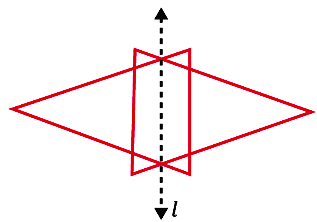
Exercise 13.2 Page No. 267
Q1: Find the number of lines of symmetry for each of the following shapes :
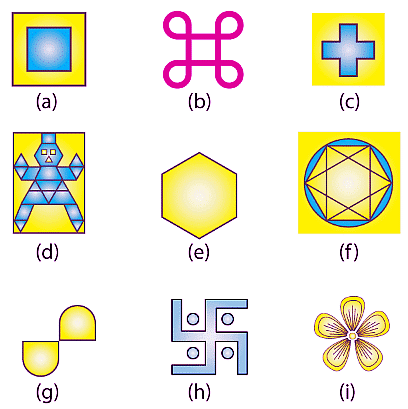
Ans:
(a) For the given figure, there are 4 lines of symmetry.
(b) For the given figure, there are 4 lines of symmetry.
(c) For the given figure, there are 4 lines of symmetry.
(d) For the given figure, there is only 1 line of symmetry.
(e) For the given figure, there are 6 lines of symmetry.
(f) For the given figure, there are 6 lines of symmetry.
(g) For the given figure, there is no line of symmetry.
(h) For the given figure, there is no line of symmetry.
(i) For the given figure, there are 3 lines of symmetry.
Now, we can observe the lines of symmetry in the above figures as follows:
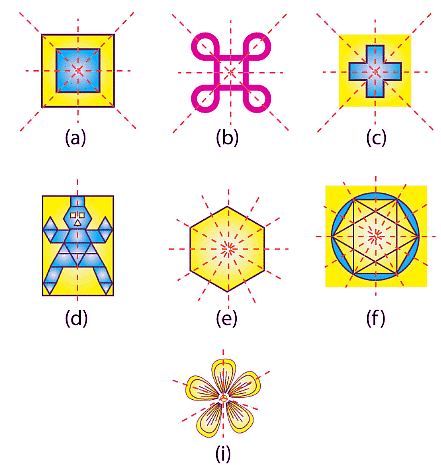
Q2: Copy the triangle in each of the following figures on squared paper. In each case, draw the line(s) of symmetry, if any, and identify the type of triangle. (Some of you may like to trace the figures and try paper-folding first!)

Ans: (a) The given triangle is an isosceles triangle. So, there will be only 1 line of symmetry.
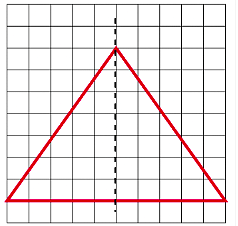
(b) The given triangle is an isosceles triangle. So, there will be only 1 line of symmetry.
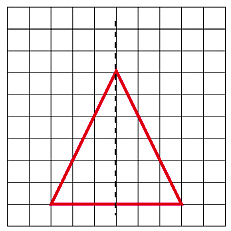
(c) The given triangle is a right-angled triangle. So, there will be only 1 line of symmetry.
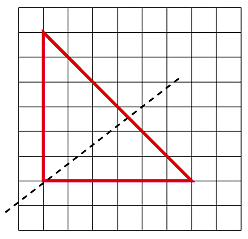
(d) The given triangle is a scalene triangle. So, there will be no line of symmetry.
Q3: Complete the following table.
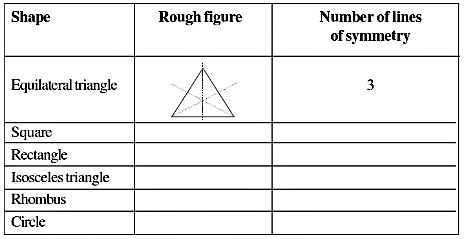
Ans: The given table can be completed as follows:
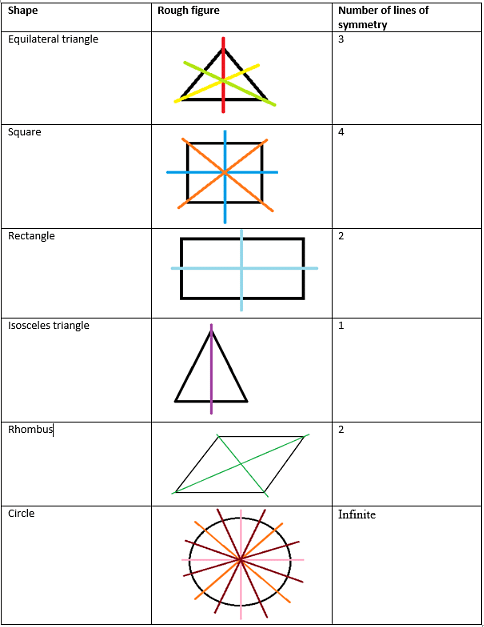
In the case of circles, we can find infinite lines. Here, some lines of symmetry are drawn. Similarly, we can draw more symmetric lines for the circle.
Q4: Can you draw a triangle which has
(a) exactly one line of symmetry?
(b) exactly two lines of symmetry?
(c) exactly three lines of symmetry?
(d) no lines of symmetry?
Sketch a rough figure in each case.
Ans: (a) Yes, we can draw an isosceles triangle which has only 1 line of symmetry.
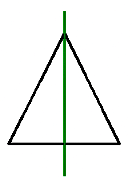
(b) No, we cannot draw a triangle which has 2 lines of symmetry.
(c) Yes, we can draw an equilateral triangle which has 3 lines of symmetry.

(d) Yes, we can draw a scalene triangle which has no line of symmetry.

Q5: On a squared paper, sketch the following:
(a) A triangle with a horizontal line of symmetry but no vertical line of symmetry.
(b) A quadrilateral with both horizontal and vertical lines of symmetry.
(c) A quadrilateral with a horizontal line of symmetry but no vertical line of symmetry.
(d) A hexagon with exactly two lines of symmetry.
(e) A hexagon with six lines of symmetry.
Ans: (a) A triangle with a horizontal line of symmetry but no vertical line of symmetry can be drawn as follows:

(b) A quadrilateral with both horizontal and vertical lines of symmetry can be drawn as follows:
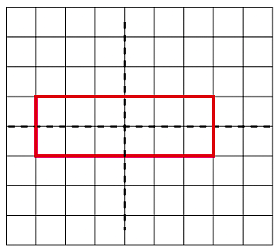
(c) A quadrilateral with a horizontal line of symmetry but no vertical line of symmetry can be sketched as follows:
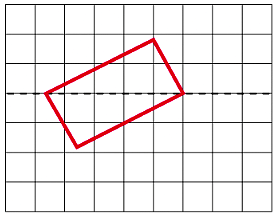
(d) A hexagon with exactly two lines of symmetry may be drawn as follows:
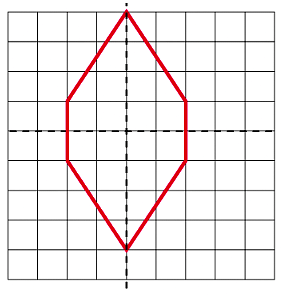
(e) A hexagon with 6 lines of symmetry may be drawn as follows:
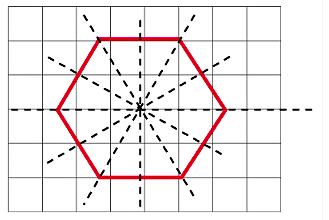
Q6: Trace each figure and draw the lines of symmetry, if any:
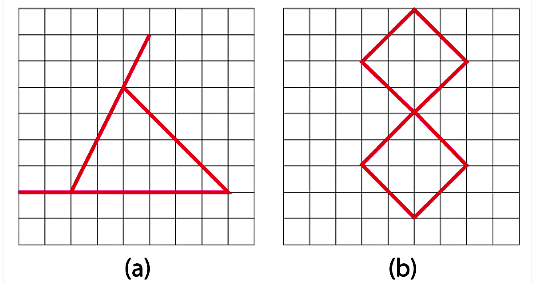
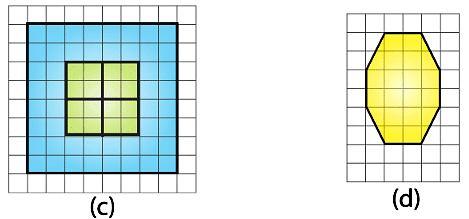
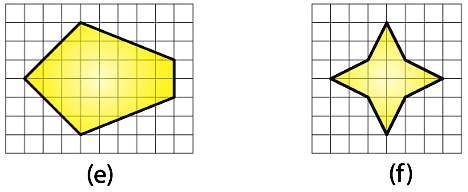
Ans: (a) The given figure is an isosceles triangle. Hence, there will be 1 line of symmetry.
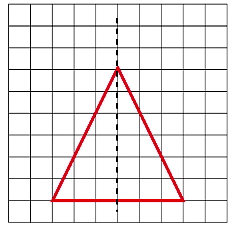
(b) The given figure has two lines of symmetry.
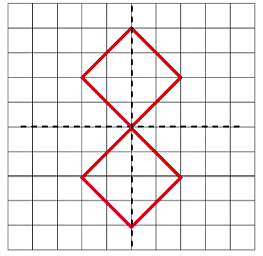
(c) The given figure has 4 lines of symmetry.
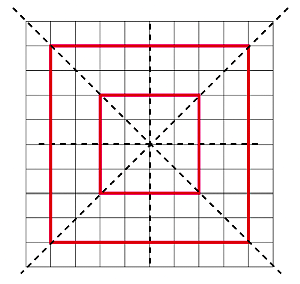
(d) The given figure is octagonal, which has 2 lines of symmetry.
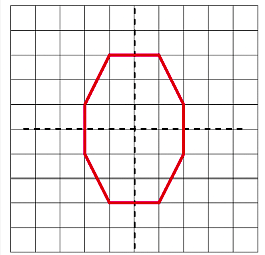
(e) The given figure has only 1 line of symmetry.
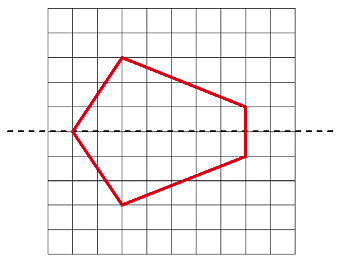
(f) The given figure has 4 lines of symmetry.
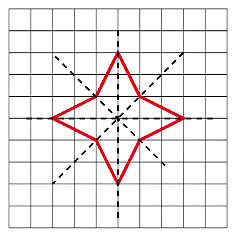
Q7: Consider the letters of the English alphabet, A to Z. List among them the letters which have
(a) vertical lines of symmetry (like A)
(b) horizontal lines of symmetry (like B)
(c) no lines of symmetry (like Q)
Ans:
(a) Vertical lines of symmetry are A, H, I, M, O, T, U, V, W, X, Y.
(b) Horizontal lines of symmetry are B, C, D, E, H, I, K, O, X.
(c) No lines of symmetry are F, G, J, L, N, P, Q, R, S, Z.
Q8: Given here are figures of a few folded sheets and designs drawn about the fold. In each case, draw a rough diagram of the complete figure that would be seen when the design is cut off.
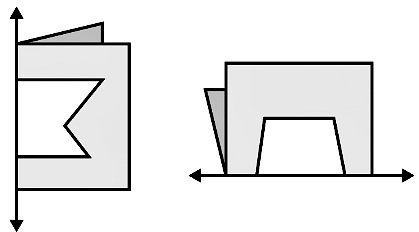
Ans: We can draw the diagrams of the complete figures as follows:
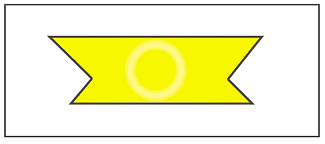

Exercise 13.3 Page No. 271
Q1: Find the number of lines of symmetry in each of the following shapes. How will you check your answers?
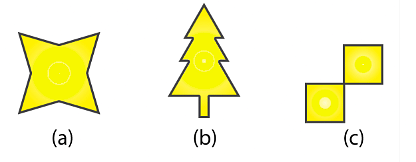
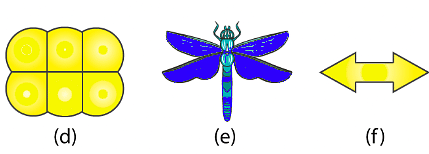
Ans: (a) For the given figure, there are 4 lines of symmetry.
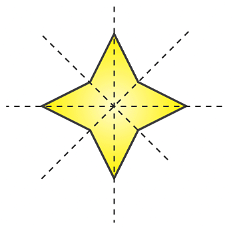
(b) For the given figure, there is only 1 line of symmetry.

(c) For the given figure, there are 2 lines of symmetry. 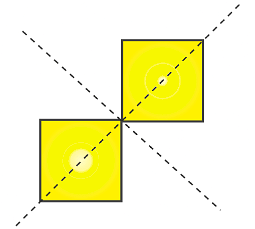
(d) For the given figure, there are 2 lines of symmetry.
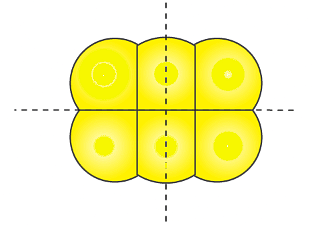
(e) For the given figure, there is only 1 line of symmetry.
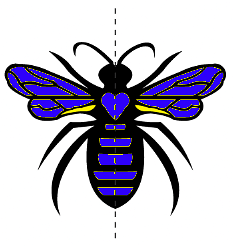
(f) For the given figure, there are 2 lines of symmetry.
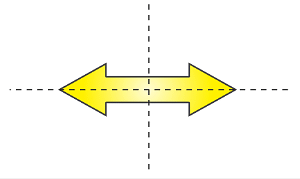
Q2: Copy the following drawing on squared paper. Complete each one of them such that the resulting figure has two dotted lines as two lines of symmetry.
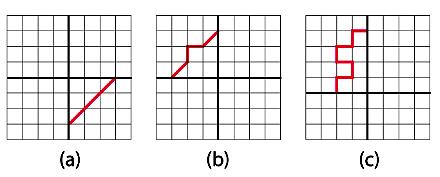
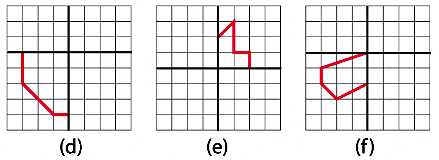
How did you go about completing the picture?
Ans: We can complete these figures by drawing similar parts as shown in these figures. First, about the vertical line of symmetry and then about the horizontal line of symmetry, or first about the horizontal line of symmetry and then about the vertical line of symmetry.
The completed figures are as follows:
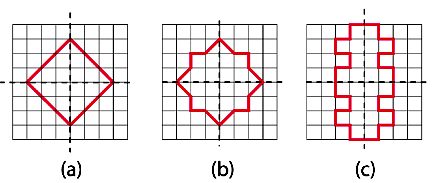
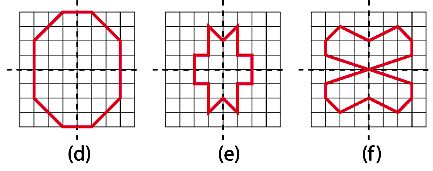
Q3: In each figure, a letter of the alphabet is shown along with a vertical line. Take the mirror image of the letter in the given line. Find which letters look the same after reflection (i.e., which letters look the same in the image) and which do not. Can you guess why?
Try for O E M N P H L T S V X
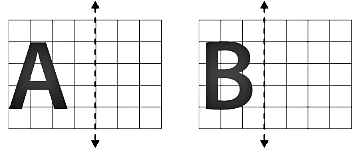
Ans: The mirror images of these figures are as follows
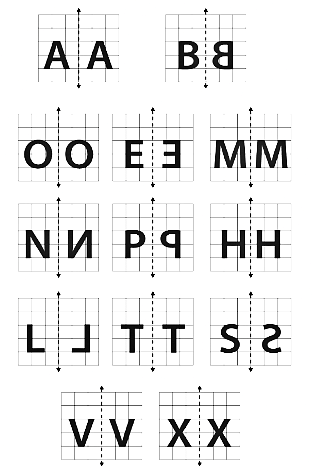
The letters having vertical lines of symmetry will have the same mirror images. These letters are O, M, H, T, V, and X, and thus these letters will look the same.
|
5 videos|378 docs|164 tests
|
FAQs on NCERT Solutions for Class 6 Maths - Symmetry
| 1. What is symmetry? |  |
| 2. How is symmetry related to class 6 NCERT syllabus? |  |
| 3. How do we identify line symmetry in a figure? |  |
| 4. What is rotational symmetry? |  |
| 5. How is symmetry used in real-life applications? |  |























